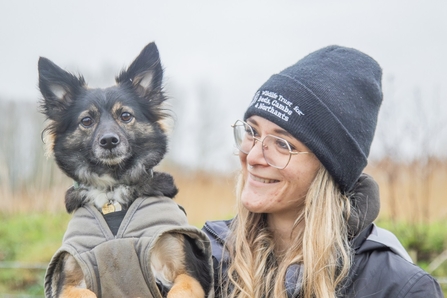The highlight has undoubtedly been our successful Nene Wetlands Beaver reintroduction.
After being missing from our waterways for at least 400 years a family of 8 (2 adults, 3 yearlings and 3 kits) were released into Delta Pit in the Nene Wetlands on 13th February. The release was undertaken with the help of the Beaver Trust who trapped and transported them down from Scotland and was watched by an audience of trust staff and guests.
The beavers have quickly settled into their new home and we’ve seen regular sightings on our trail cameras as well as increasing signs of activity, copping, felling and barking of trees, across their 17 hectacre enclosure. The release has gained lots of media and local attention and we subsequently hosted DEFRA to pre-film their announcement on a move to licensing wild beaver releases, something we’ll look to explore in future years. For the latest update, blogs and a podcast see Project Beaver | Wildlife Trust for Beds Cambs & Northants
The Lings team have been focussing on a number of sites. At Old Sulehay, the weekly volunteer team has been finishing the scrub management season strong, diversifying the hedgerows on Sammocks Hill with laying and coppicing, and creating a new scallop in Stonepit. They've contributed over 1,650 hours this winter and are now tackling the replacement of 100 fence posts across the reserve.
Meanwhile at Collyweston, huge effort has been put into clearing some of the bramble and blackthorn from the SSSI grassland, and Ian and Leo have been laying scrub around the main lake at Stortons Pits to reduce disturbance.’








